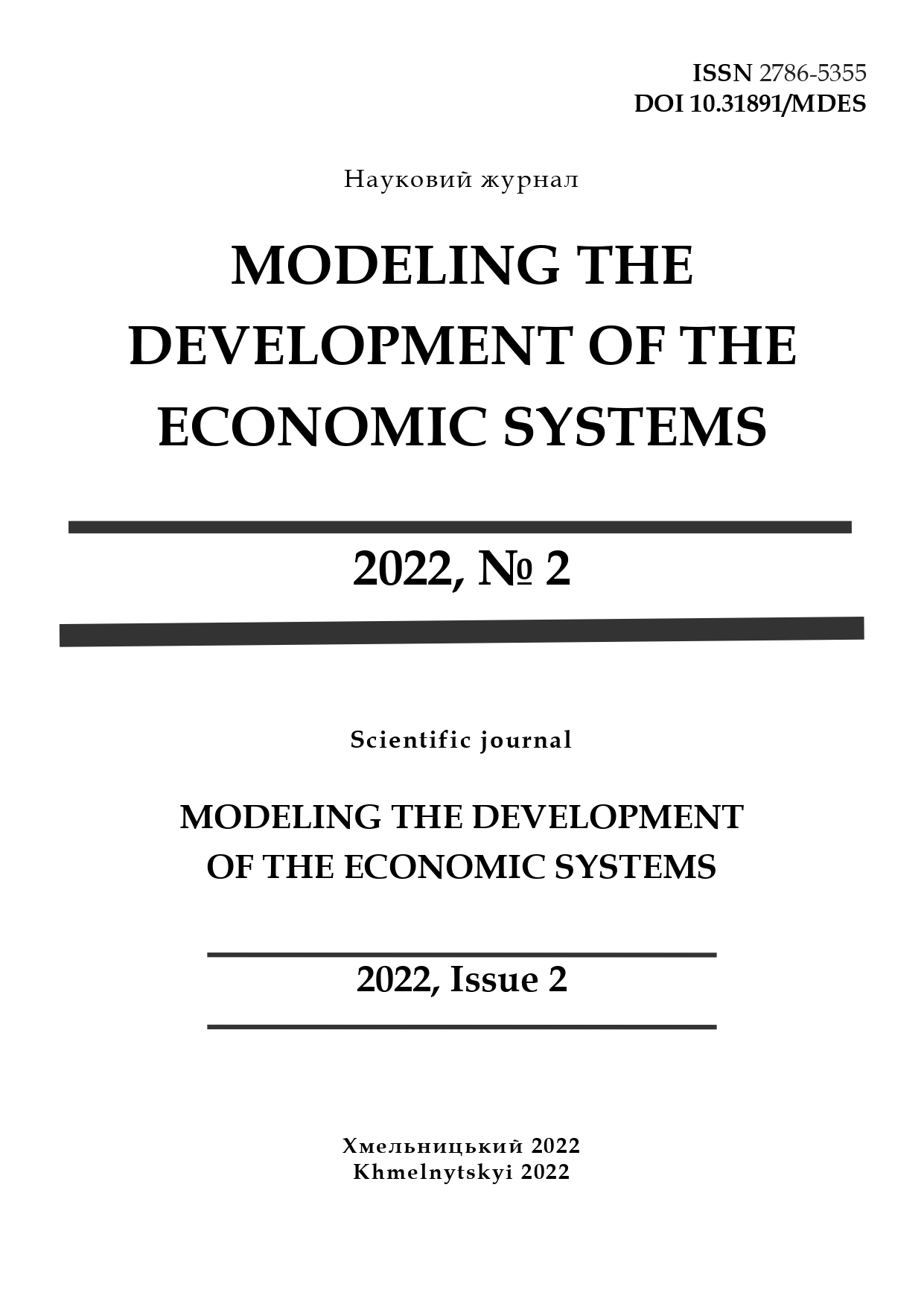ANALYSIS OF CURRENCY INDICATORS OF PERSONNEL OF PRODUCTION ENTERPRISE
DOI:
https://doi.org/10.31891/mdes/2022-4-20Keywords:
personnel, enterprise, personnel turnover, personnel movement, turnover rate, dismissal rate, personnel turnover managementAbstract
The article analyzes the use of quantitative (numerical) and qualitative indicators for analyzing staff turnover at the enterprise.
Evaluation of turnover is carried out according to two categories of indicators: quantitative (numerical) and qualitative. Both qualitative and quantitative indicators are used to assess the risks associated with staff turnover. It has been proven that their use depends on many factors, such as: geographical location, spheres of activity, management strategies, qualifications, experience of employees.
The main types and forms of personnel turnover assessment are considered, in particular: active, passive, intra-organizational, actual, hidden, natural turnover. It has been studied that the state of the personnel turnover process is characterized by the main coefficients: the turnover coefficient (Kp) - used to assess the scale of turnover in the organization as a whole and in its individual units; specific coefficient (Kk) - to determine turnover volumes by individual sex-age, professional and other groups; turnover intensity ratio (Kip) - shows how many times the specific turnover ratio in this group is greater or less than the turnover rate for the enterprise as a whole. Additional coefficients were also considered: the layoff ratio (Kzv), which is calculated as the number of layoffs for the reporting period as a percentage of the average number of employees in the same period, the staff stability index (IST) - the share of employees who have worked in the organization for at least a year, additional turnover index (Ipl.d) - shows the turnover of employees who have worked for a short time.
Based on the above-mentioned indicators, an analysis of the personnel turnover rate of the Khmelnytskzalizoboton enterprise TDV, which is engaged in the production of concrete and metal products, construction materials, was carried out. The calculations of the coefficients indicate low staff turnover at the enterprise, which is a rather positive trend.
References
Balabanova L.V., Sardak O.V. Upravlinnia personalom. Pidruchnyk. Kyiv : Tsentr uchbovoi literatury, 2011. 468 s.
Balabaniuk Zh.M. Analiz pokaznykiv rukhu personalu orhanizatsii. Efektyvna ekonomika. 2011. № 8. URL: http://www.economy. nayka. com.ua /?op=1&z=650.
Hetman O.O., Shapoval V. M. Ekonomika pidpryiemstva : navch. posib. K. : Tsentr uchbovoi literatury, 2010. 488 s.
Kotsalap S.O., Ulasevych, V.Iu. Analiz problem plynnosti kadriv na pidpryiemstvakh riznykh sfer diialnosti. Еnerhosberezhenye. Еnerhetyka. Еnerhoaudyt. 2013. № 8. S. 67–71.
Samoliuk N.M., Yurchyk H.M. Plynnist personalu: indykator kadrovoi bezpeky pidpryiemstva. Visnyk Natsionalnoho universytetu vodnoho hospodarstva ta pryrodokorystuvannia. 2017. №12. S. 507-508.
Khmil F. I. Upravlinnia personalom : pidruchnyk dlia studentiv vyshchykh navchalnykh zakladiv. Kyiv : Akademvydav, 2006. 488 s.
Hudz M., Atalai A. Shliakhy rozviazannia problemy plynnosti kadriv na promyslovomu pidpryiemstvi. European journal of economics and management. 2019(5). №2/22. URL: https://eujem.cz/wp-content/uploads /2019 /eujem_2019_5_2/ 22.pdf.
Liplianska O. Analiz osnovnykh pidkhodiv do vyvchennia plynnosti personalu v orhanizatsiiakh URL: http://www. nbuv.gov. ua/portal /soc _ gum /znpip/1/2009_24/ RED_Zbirnyk24_12.pdf
Melnychuk D.P. Osoblyvosti otsinky personalu na vitchyznianykh pidpryiemstvakh. Visnyk ZhDTU. Ekonomichni nauky. 2017. № 4 (42). S. 224-231.
Pozdniakova L. O., Biletska D. O. Metodolohichni zasady systemy upravlinnia personalom orhanizatsii. Zbirnyk naukovykh prats Ukrainskoho derzhavnoho universytetu zaliznychnoho transportu. 2015. №158(1). S. 51– 56.
Osadcha Yu.V. Analiz vzaiemozviazkiv mizh prychynamy, faktoramy ta motyvamy plynnosti naimanykh pratsivnykiv. Visnyk Skhidnoukrainskoho natsionalnoho universytetu imeni Volodymyra Dalia. 2011. №16. S. 74-77.
Plynnist kadriv v biznesi – problema chy mozhlyvist? // Polihraf HR Security. URL: https://hr-security.ua/ ua/plinn%D1%96st-kadr%D1%96v-v-b%D1%96znes%D1%96-problema-chi-mojliv%D1%96st
Holubka O. Ya., Didovych Yu. O., Kopusiak Ya. F. Analiz metodiv upravlinnia personalom. Ekonomichnyi visnyk Zaporizkoi derzhavnoi inzhenernoi akademii. 2016. № 5(1). S. 113–117.
Tarnavskyi M. I., Bala R. D., Bilyk M. V., Bala O. I. Faktory plynnosti kadriv na pidpryiemstvakh v umovakh rozvytku mizhnarodnykh ekonomichnykh zviazkiv. Biznes Inform. 2018. №1. S.177-182.
Herasymenko O. Efektyvnist upravlinnia personalom na malomu pidpryiemstvi: indykatory stanu ta priorytetni napriamy pidvyshchennia. Visnyk Kyivskoho natsionalnoho universytetu imeni Tarasa Shevchenka. Ekonomika. 2015. № 7 (172). S. 29–37.
Vahonova O. H. Vyznachennia osnovnykh motyviv plynnosti kadriv na pidpryiemstvakh v suchasnykh umovakh hospodariuvannia. Zhurnal «Ekonomika promyslovosti». 2015. №2. S. 126-132.




